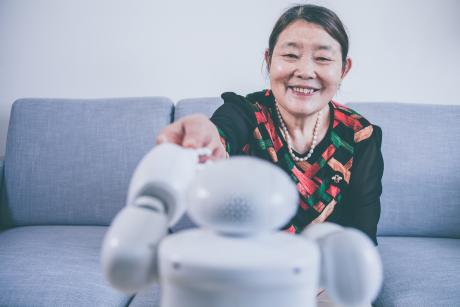The phrase “silver tsunami” drives me nuts. It is a common expression used to describe the unprecedented increase in the number of older people in the world, and it is used even in the aging services sector. People employ this doomsday term as a way of demonstrating they are “in the know” about the demographics of aging.
Fact check: a tsunami is a large wave that results in vast destruction and mass casualties. A natural disaster of catastrophic proportions, it is planned for, mitigated against and feared.
Unfortunately, this phrase is fun to pronounce. Silver tsunami became embedded in our collective psyche because of its alliteration. And, to some, the phrase sounds clever.
Using silver tsunami to describe population aging was intentional as a shorthand description of the burden that will befall the country when millions of people grow old, get sick and need care. It is an economic term, based in calculations of increasing cost. On the nation’s balance sheet, the great silver tsunami rests squarely in the liability column. This drain on financing is coming. Be aware. Be warned. Plan ahead.
Re-Evaluating Impacts of Longevity and the Meaning of Aging
I am all for planning ahead. Increasing numbers of older people will strain our healthcare resources, place increased burden on caregivers and accelerate a workforce shortage. I do not take issue with cost concerns. My protest lies elsewhere.
The term silver tsunami fails to account for the asset of increasing numbers of older people, many of whom are reaping the benefits of better health and increased longevity. Its economic assumption presupposes a future of healthcare delivery that resembles the past. We are re-valuing how, and what, we pay for in healthcare and where we should invest in prevention. Even the delivery of long-term care will evolve in the future.
Also this phrase does not convey what it means to get old and be old. The swell of people in the wave are individuals, with lives of purpose, meaning, and, yes, difficulty. Aging is a first-person experience.
But our culture remains awash with negative images and stereotypes of older people. Ageism is used to diminish and devalue people and is a convenient way to divide adults into two categories: us and them. Ageism distracts from the fundamental truth that advanced age is a period of human development.
The FrameWorks Institute is the research partner for the Reframing Aging Project, an initiative sponsored by eight leading organizations in the field of aging. FrameWorks has developed strategies for changing the way we think and speak about aging. Consider this question, “What do older people need?” The answer to this question brings to mind an abstract group of old people who will need transportation, housing, care and so forth.
As an exercise, now ask the same thing differently, “What will I need when I get old?” The issues of aging are not about other people. The issues of aging are about everyone. Older people are individual glimpses of our future selves, given time.
People Live Longer but Better Lives
In 2017, a person reaching age 65 had an average life expectancy of 19 additional years. A child born in 2017 could expect to live more than 30 years longer than a child born in 1900. In the span of a life, where were those extra years added? Although the average life expectancy has increased, additional years weren’t tacked on at the end. Americans are enjoying more and better years before the declining years of advanced age.
In 2009, Harvard Professor Sara Lawrence-Lightfoot wrote a book called “The Third Chapter: Passion, Risk, and Adventure in the 25 Years After 50.” Professor Lawrence-Lightfoot’s research has led her to conclude that this third chapter is a stage of life when “many women and men are embracing new challenges and searching for greater meaning in life.”
Marc Freedman, CEO and founder of Encore.org, explores meaning and purpose in people older than age 50. Freedman is the creative force behind The Purpose Prize, an award given to “demonstrate that older people comprise an undiscovered, and still largely untapped, continent of solutions to an array of pressing societal challenges.” His organization works to innovate “new ideas and models to leverage the skills and talents of experienced adults to improve communities and the world.”
These are the assets I’m talking about. Experienced adults can improve the world. They are cherished members of their families and communities. Older people in the third chapter of life are finding additional purpose and exploring creativity. A true accounting of a future full of 95 million older people must be balanced, with an eye toward planning for both the burden of care and the benefit of contribution.
Personally, I prefer the term “age wave.” You can ride a wave, but it can capsize you. We must prepare for both. It is essential that we understand the impact on the U.S. economy when, in 2060, nearly 25 percent of the population will be older than age 65. Who will provide care when those individuals reach advanced age? How will it be paid for?
These challenging questions have already arrived with the front edge of this surge. In an August 2019 article, The Washington Post explored in detail the elder boom and worker shortage currently facing the state of Maine. The article predicts the issues confronting Maine are a preview of the nation’s future.
As we prepare for this wave, we also must plan to surf it. Millions of us will have time and experience to share. We need to be healthy enough to do so, mentally and physically. It is essential we devote additional time and more resources to healthy aging, as individuals who are growing older and as a nation concerned about health.
Kathy Greenlee, J.D., previously served as U.S. Assistant Secretary for Aging and Kansas Secretary for Aging. She is a member of the Board of Directors of the National Council on Aging, and member of the Generations Editorial Advisory Board.





